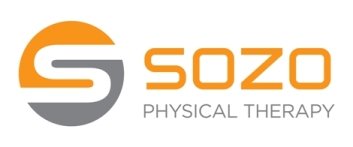Wednesday, May 5, 2010
Hands Only CPR
When an adult has a sudden cardiac arrest, his or her survival depends greatly on immediately getting CPR from someone nearby. Unfortunately, less than 1/3 of those people who experience a cardiac arrest at home, work or in a public location get that help. Most bystanders are worried that they might do something wrong or make things worse. That’s why the AHA has simplified things.
Don’t be afraid. Your actions can only help.
It’s not normal to see an adult suddenly collapse, but if you do, call 911 and push hard and fast in the center of the chest. Don’t be afraid. Your actions can only help. Take a minute and look around this site and invite your friends! Increasing the number of people who know about Hands-OnlyTM CPR will increase the chance that someone can help when an adult suddenly collapses, and more lives can be saved.
Hands-OnlyTM CPR works
Hands-OnlyTM CPR, performed by a bystander has been shown to be as effective as “conventional” CPR in emergencies that occur at home, work or in public. There are only two steps to remember:
1) Call 911
2) Push hard and fast in the center of the chest.
Please click here for a video and further instructions.
Ref: American Red Cross, http://handsonlycpr.org/
Wednesday, April 14, 2010
Managing Knee Osteoarthritis (OA)

Monday, April 12, 2010
Non-Invasive Management of Injuries
Pain whether it be from a contusion, numbness, tingling, or inflammatory, the usual rest, ice and range of motion through approved daily power stretches are appropriate. See your local therapist for more options. A variety of non-invasive modalities may be used to self-manage your pain, such as:
1. Deep heat treatments - used for muscle spasms, sprains, strains and tendinitis after 48 hours of your injury. It can also be used to treat contractures, chronic arthritis and bursitis. Heat treatments can include hot baths, heating pads, and even paraffin (hot wax). 
2. Cold therapy treatments - applied immediately after injury to relieve pain and reduce internal bleeding and swelling. Ice treatments include cold packs, ice massage applicators and cold water.
3. Taping treatments - elastic tape applied over a muscles to reduce pain and inflammation, promote relaxation, and support muscles for movement. Tape is non-restrictive and allows full range of motion. (Must be applied by your therapist, and educated for self-application)
4. Topical biomedicine - natural pain relieving gels like biofreeze or sombra stimulate nerve endings in the skin and desensitizes the sensation of pain. Good for conditions which are close to the skin.
5. Massage treatments - used to decrease inflammation in muscle, tendons, and joints. Can reduce pain, improve range of motion, and improve flexibility. Good for inflammatory, stiffness, strains/sprains, tendinitis, and bursitis.
Rehab Management, Vol.23 No.2
Wednesday, April 7, 2010
Prevent Knee Injuries

Resources please share this helpful tool with all your team members and see your on-site therapist for further prevenative training.
- When kneeling always come down with one leg at a time.
- Always place two hands on your knee as you go down.
- To increase flexion at the knee and hip come down with knee falling behind toes.
- Weight must be distributed through the heel, not through the toes.
Monday, April 5, 2010
Manage Your Soreness with a Massage Stick
Great for the neck, shoulders, arms, upper/lower back, gluts, IT band, thighs, hamstrings, quads, calves and feet!
Recommended and used by professional athletes, sports trainers, massage & physical therapists, chiropractors and doctors. See your on-site therapist and ask how you can get one!
Thursday, April 1, 2010
Runners - Pain or Pleasure
- IT Band Syndrome
- Patellofemoral Syndrome,
- Achilles Tendinitis
- Plantar Fasciitis
An ounce of prevention equals a pound of pain free running. Remember to stretch before and after your run. Consider equipment changes such as new shoes which allows for full foot accommodation. Orthotics also will help keep your ankle in alignment as you run reducing risk for injury and pain. See your on-site therapist today these valuable tools. Orthotics now are only $40.00 for current employees serviced through One Accord Industrial!
Advance for Physical Therapy and Rehabilitation Vol.21 No.5

